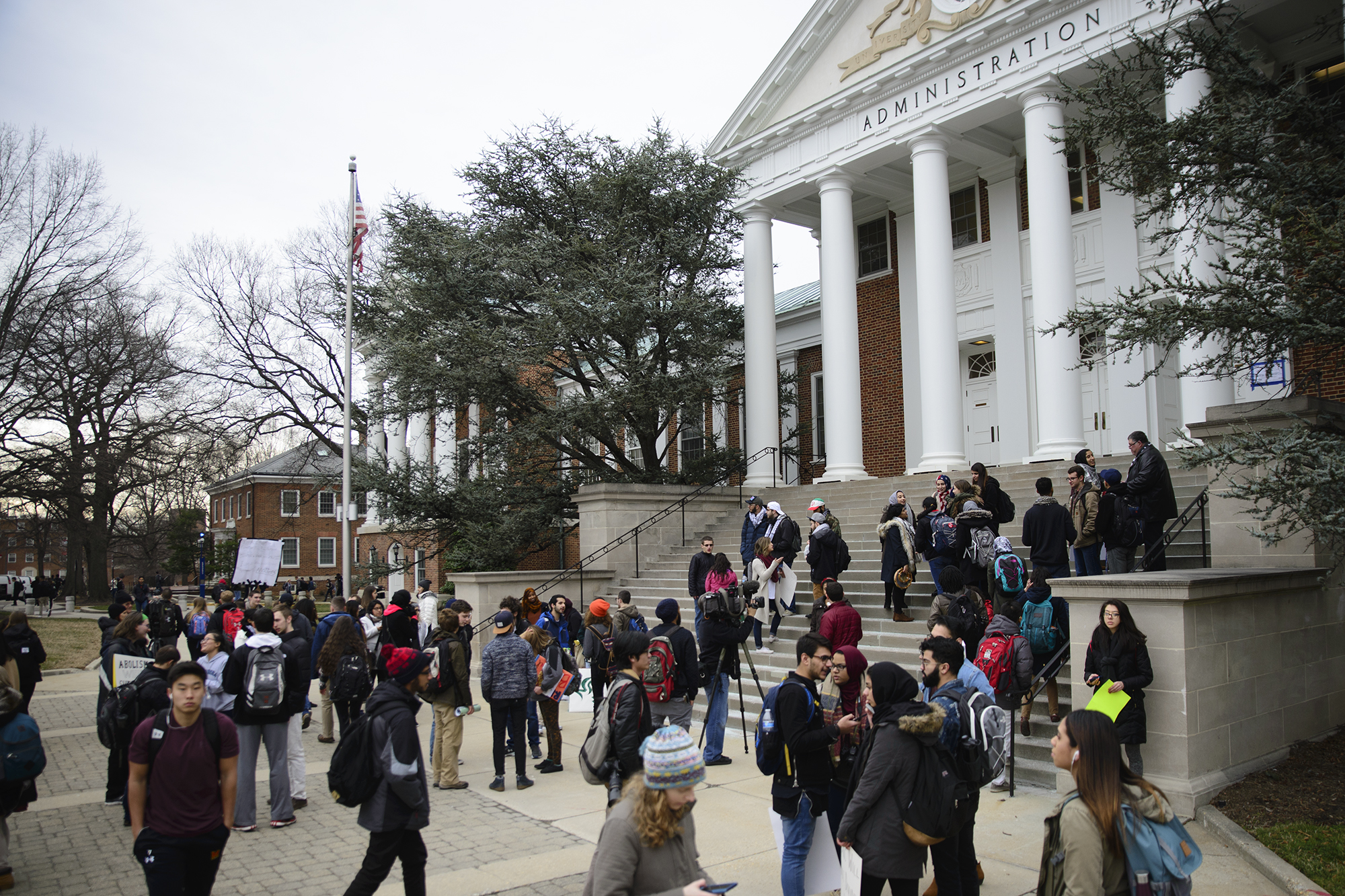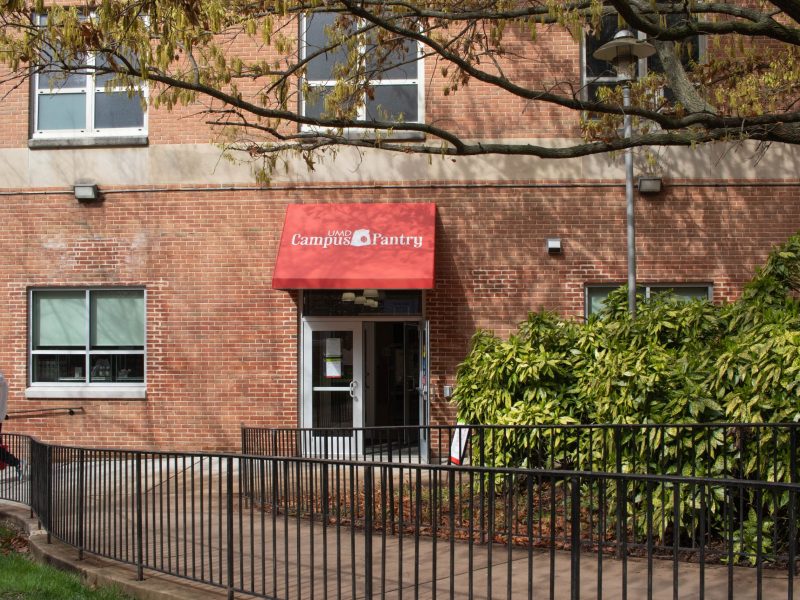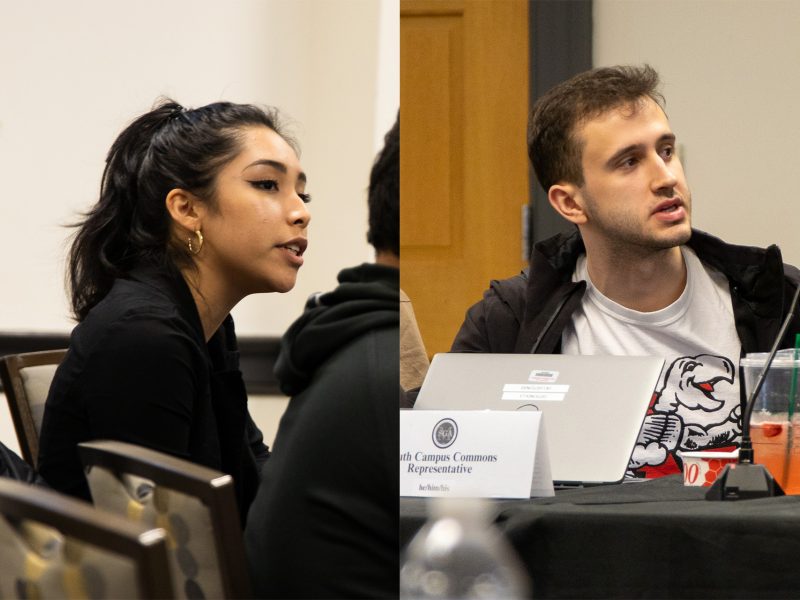By Natalie Schwartz and Christine Condon
Staff writers
Hala Alkhalouf was planning her mother’s trip to the United States when the news broke: President Trump had signed an executive order barring citizens from seven Muslim-majority nations from entering the country.
She realized that her mother, who is from Syria and now lives in Saudi Arabia, wouldn’t be visiting any time soon.
“My sister and I are here without family, and we can’t leave the country, we can’t see my family, my mom can’t come,” the senior civil engineering major said. “It’s like a prison.”
Alkhalouf, who hasn’t seen her parents since last August, said she initially couldn’t believe the order was taking effect.
“This is what we ran away from,” she said. “We came to America thinking that this is a country that respects people no matter where they come from, their religion. We were like, ‘There’s no way it’s happening.'”
Alkhalouf is not alone. Following Trump’s executive order, the University of Maryland community was left grappling with far-reaching implications for its students, faculty and research capabilities.
The order directly affects about 350 people on the campus — predominantly graduate students, postdoctoral researchers and visiting scholars, university President Wallace Loh wrote in a campus-wide statement Tuesday.
“To all of you, we pledge our full support,” Loh wrote. “This University is your University. You belong here. We stand with you.”
Alkhalouf said the emails she has received from university officials have been reassuring. She even set a screenshot of an email she got from the civil engineering department, which expressed support for those affected by the order, as her cover photo on Facebook.
At least one international student is unable to return to the United States. Abubakr Suliman Eltayeb Mohamed Hamid, an engineering doctoral student and live-in language teacher at the Language House, traveled to his home country of Sudan during winter break and is temporarily barred from returning to this university.
Another student, Maryam “Aida” Mohammadi, an Iranian green card holder, was detained for five hours Saturday before being released from Washington Dulles International Airport with her 5-year-old cousin, a dual citizen of the U.S. and Iran, after traveling abroad over winter break to visit her relatives.
At this university, two undergraduate students and 94 graduate students are from Iran, and at least one student is from Sudan, according to data from the Office of Institutional Research, Planning and Assessment.
This university’s Office of International Affairs is focused on gathering more information about the affected community and connecting them to resources, said Ross Lewin, associate vice president for international affairs.
The OIA is looking into bringing immigration lawyers to help students directly affected by the order and connecting them to counseling services on the campus, Lewin said. The staff is also planning to list resources on their website and providing up-to-date information about the executive order, he added.
Yvette Lerma Jones, the Latinx student involvement and advocacy coordinator at the Office of Multicultural Involvement and Community Advocacy, said a few students have come to her seeking advice and fearing the effects of future executive orders on other immigrant communities.
Fatemeh Keshavarz, the director of the Roshan Institute for Persian Studies, said one of the worst implications of the executive order is that it could give international students a sense of being cut off from their base.
Keshavarz, an Iranian citizen who attended a London university, relied on her family back home in Iran to support her during her college years. She said she fears the order may make it harder for international students to do the same.
“[International students] don’t have family here,” said Katie Brown, Graduate Student Government public relations vice president. “When something like this happens and they don’t know what’s going on, UMD is the only institutional body that they’re familiar with.”
This makes it essential for this university’s administration to provide more clarity about how they plan to protect the affected students and where they can go for help, said Brown, a communication doctoral student.
It is still unclear how the ban will affect the university’s ability to recruit international doctoral candidates or faculty. A visiting professor from abroad has also notified this university he will not be coming to teach as a form of protest of the ban, despite not being affected, Loh wrote in Tuesday’s letter.
Keshavarz said the order has put her department at risk of losing one Iranian doctoral candidate. Although Keshavarz was excited about recruiting the candidate, if the executive order stays, it’s “not possible for [us] to consider any students coming from any of these areas,” she said.
Students within the program are already feeling the effects of the executive order on their research, Keshavarz added.
“A lot of students, when they come from a different cultural heritage background, their topic of study is somewhat related,” Keshavarz said. “I have students currently who do their research on the writings of Iranian women or travel there to look at archives and libraries [and] interview individual writers. That becomes totally impossible. At the academic level, it’s affecting us in very serious ways.”
Matthew Miller, a Roshan Institute Research Fellow, said he can no longer attend a conference in Iran where he was going to sit on a panel and present one of his papers.
Miller was going to buy his tickets this week, but the March conference, held by the Association for the Study of Persianate Societies, was abruptly canceled after the Iranian government announced Saturday it would no longer issue visas to American citizens for 90 days, or as long as the U.S. ban remains in effect.
The executive order “seems like a particularly cruel political maneuver,” in that it has the unintended ramifications of “halting any international educational exchanges,” Miller said.
Peter Wien, an associate professor of modern Middle Eastern history, said the order could prove damaging for the U.S. and its relationships abroad.
“The thinking behind the executive order is to reduce the threat of terrorism in the U.S. and to increase security,” he said. “One thing is sure — it has the opposite effect.”
Wien noted that the order is reminiscent of World War II-era immigration issues, and labeled this problem a “serious constitutional crisis.”
“The historical precedent that is very often mentioned these days is the precedent of the 1930s, where Jews who were persecuted in Germany were trying to get asylum, were trying to get access to a number of countries including the U.S. and who did not get in,” he said. “It’s a very apt parallel.”
Nationwide, thousands have gathered at airports to protest Trump’s executive order, and thousands have continued to voice their opposition. So despite the struggle her family faces as a result of the ban, Alkhalouf said she remains optimistic.
“When we saw the protests in front of the White House, what was happening in the airports, I felt so relieved, to be honest, and one thing that really I was thinking is that this is the country that I want my children to be part of,” she said.



